1) To work, you will need yarn of your favorite colors and a suitable hook. Colors can be combined as the soul wishes)

2) We collect the necessary number of air loops for a blanket of the required length. The ends of the threads are not too short - you need to fringe at the end of knitting.
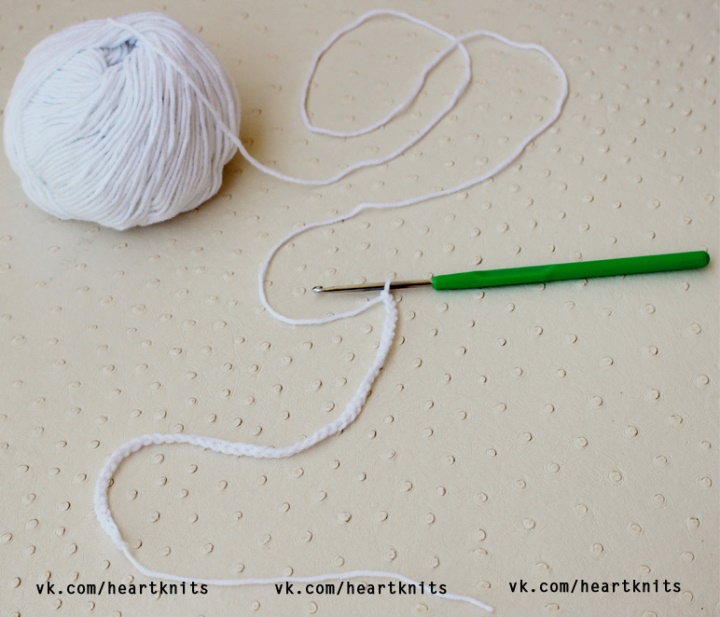
3) The first row is knitted with a grid of columns with a crochet and air loops.
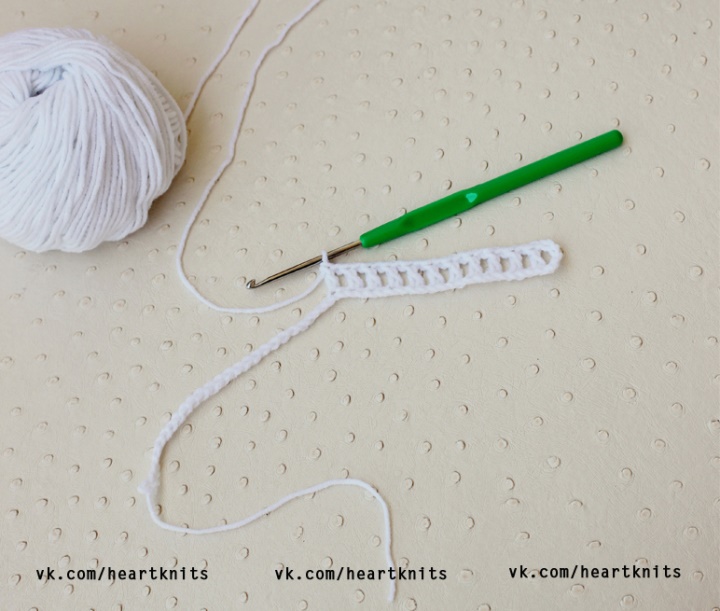
4) The second row is knitted alternating columns without a crochet and air loops.
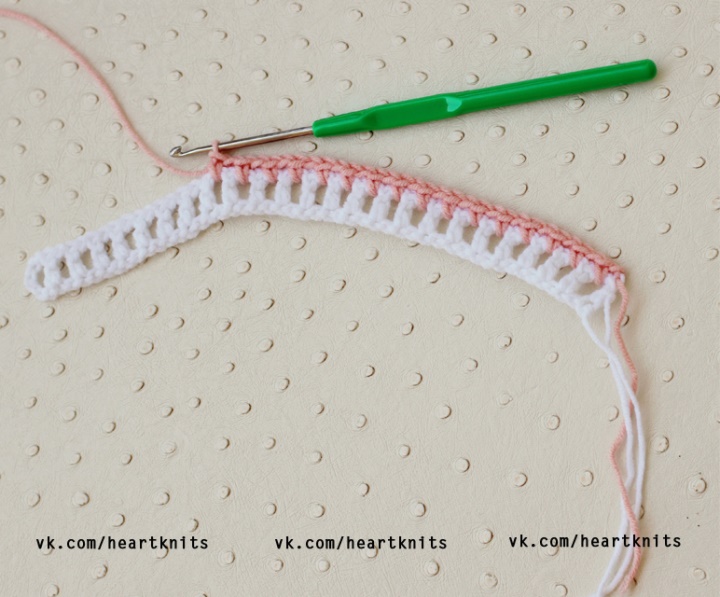
5) Then alternate these 2 rows, changing only the thread color in the desired order.
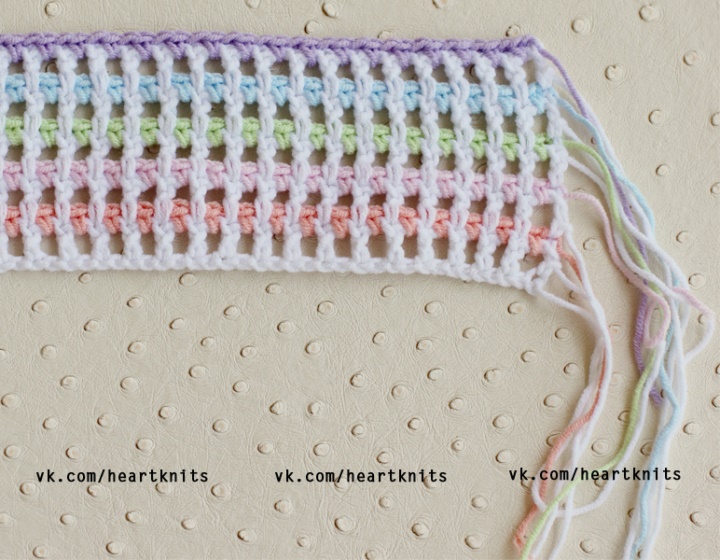
6) At the end of the work, make the fringe brushes, hiding the ends of the thread.
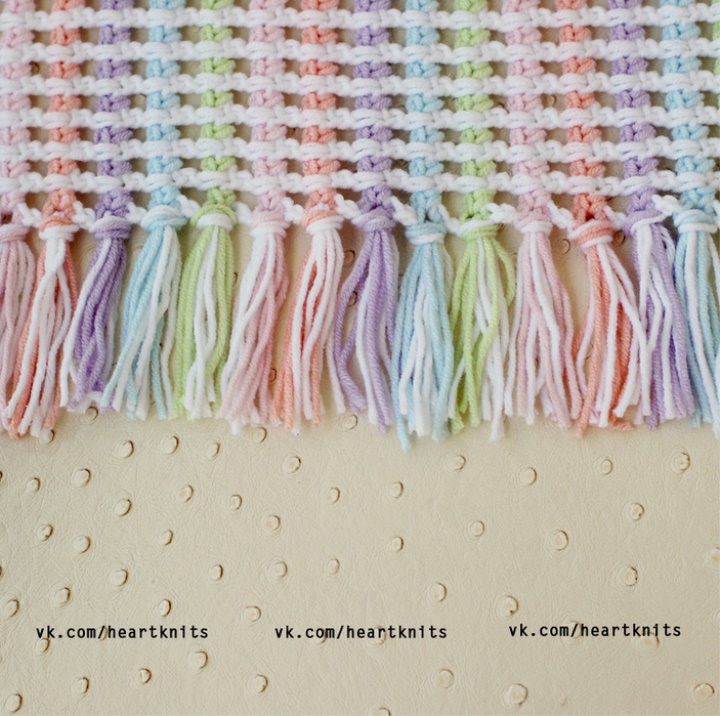
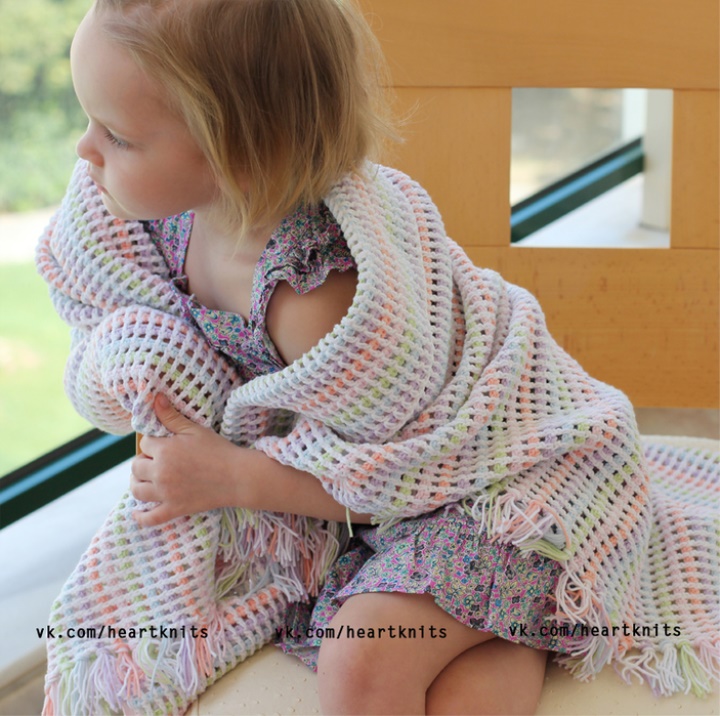

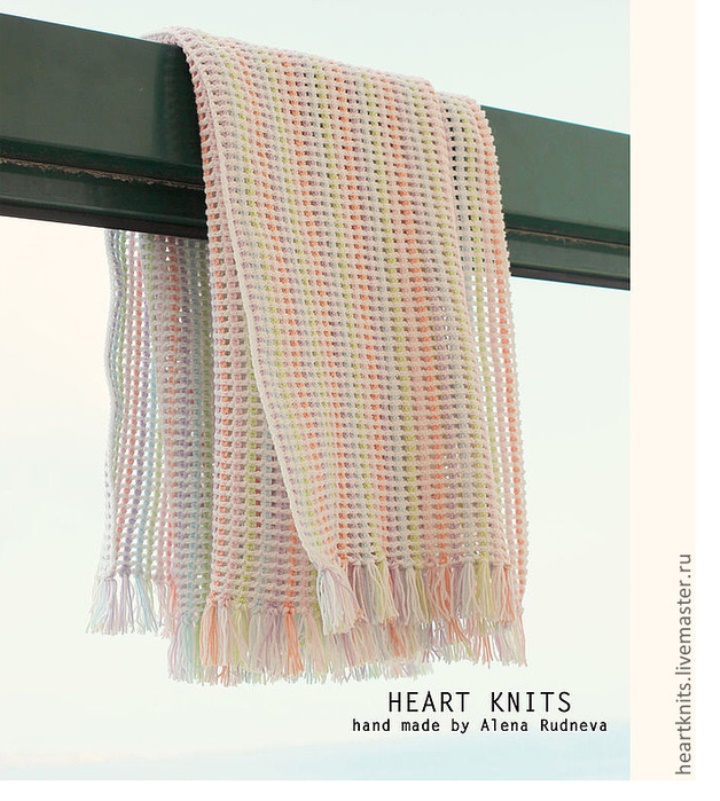
Knitted plaid about the size of a meter to a meter and left the main white color somewhere 5-6 skeins 50g / 160m, and lilac, light green, peach, blue and pink somewhere in 1-2 coil. More precisely, I can not say, I also had the remains of incomplete skeins. Plus, even on the fringe a little, the total weight of the rug 600 grams somewhere, plus or minus 50 g {#} Hook number 3 was.
****
At the beginning and end of each row, it is necessary to leave the ends of the threads, but when we make the fringe, we also add cut threads of any colors so that the brushes turn out to be more magnificent. The more threads you add, the more splendid the fringe is for an amateur
****
The first row: a column with a crochet and an air loop alternate to the end of the row. The second row: in the air loops of the previous row knit stitches without crocheting are knitted, and above the columns with the crochet of the previous row are knitted air loops. Further all the time, these two rows alternate, my first and all odd rows were knitted in white. Pay attention to the photo that the columns with the crochet in these rows always knit in the top of the column with the crochet of the previous rows, and not in the air loop
Source :
http://club.osinka.ru/topic-120370?p=12321078#12321078